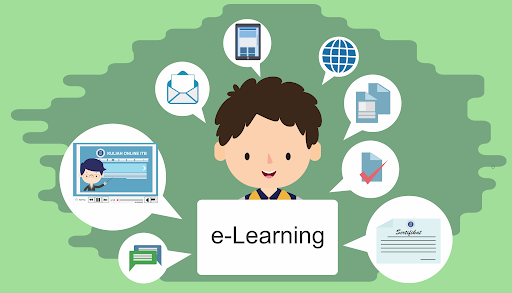In recent years, the landscape of education has undergone a significant transformation with the rise of eLearning. With the advent of technology, traditional classrooms are no longer the sole avenue for learning. eLearning, or electronic learning, has emerged as a powerful tool that offers students a flexible, personalized, and interactive learning experience. In this article, we will delve into the most crucial benefits of eLearning for students, highlighting how it revolutionizes education in the digital age.
- Accessibility and Flexibility:
One of the primary advantages of eLearning is its unparalleled accessibility and flexibility. Unlike traditional classroom settings, eLearning allows students to access educational materials anytime, anywhere, as long as they have an internet connection. This flexibility eliminates the constraints of geographical location and time zones, enabling students to learn at their own pace and convenience. Whether they are working professionals, stay-at-home parents, or individuals with busy schedules, eLearning provides the flexibility to balance their studies with other commitments.
Moreover, eLearning caters to diverse learning styles and preferences, accommodating students who thrive in self-paced environments. It empowers learners to customize their learning experience, choose the most suitable time for study, and revisit challenging concepts as needed. By removing the barriers of time and place, eLearning ensures that education is accessible to a broader spectrum of students, promoting inclusivity and diversity in learning.
- Personalized Learning Experience:
eLearning platforms leverage advanced technologies such as artificial intelligence and machine learning to deliver personalized learning experiences tailored to individual student needs. Through data analytics and adaptive learning algorithms, these platforms track students’ progress, identify their strengths and weaknesses, and offer targeted interventions and recommendations. As a result, students receive customized learning pathways that align with their learning objectives and pace, enhancing their engagement and motivation.
Furthermore, eLearning allows for adaptive assessments that dynamically adjust difficulty levels based on students’ performance, ensuring that each learner is challenged at an appropriate level. This personalized approach not only fosters deeper understanding and retention of concepts but also boosts students’ confidence and self-efficacy. By catering to diverse learning needs and preferences, eLearning promotes student-centered education that empowers learners to take ownership of their learning journey.
- Interactive and Engaging Learning Environment:
Traditional lectures and textbooks often struggle to capture students’ attention and maintain their engagement. In contrast, eLearning offers a dynamic and interactive learning environment that incorporates multimedia elements, gamification, simulations, and virtual reality to make learning more engaging and immersive. These interactive features stimulate students’ curiosity, creativity, and critical thinking skills, transforming passive learners into active participants in their learning process.
Moreover, eLearning encourages collaborative learning through online forums, discussion boards, and group projects, fostering peer-to-peer interaction and knowledge sharing. Students can collaborate with their peers from diverse backgrounds and geographic locations, gaining valuable insights and perspectives that enrich their learning experience. By creating an interactive and collaborative ecosystem, eLearning cultivates a sense of community among students, promoting social learning and peer support.
- Cost-Effectiveness and Resource Efficiency:
Traditional education often entails significant expenses related to tuition fees, textbooks, transportation, and accommodation. In contrast, eLearning offers a cost-effective alternative that reduces the financial burden on students and educational institutions alike. With eLearning, students can access high-quality educational resources and courses at a fraction of the cost of traditional education, eliminating expenses associated with commuting, accommodation, and physical textbooks.
Furthermore, eLearning promotes resource efficiency by reducing the consumption of paper and other physical resources. Digital textbooks, multimedia materials, and online assessments minimize the environmental impact associated with traditional educational practices, contributing to sustainability efforts. Additionally, eLearning enables institutions to scale their educational offerings more efficiently, reaching a larger audience without significant infrastructural investments.
- Continuous Learning and Skill Development:
In today’s rapidly evolving job market, lifelong learning and skill development are essential for career advancement and personal growth. eLearning facilitates continuous learning by offering a diverse range of courses and certifications that align with emerging trends and industry demands. Whether students are pursuing academic qualifications, professional certifications, or acquiring new skills, eLearning provides a flexible and accessible platform to enhance their knowledge and expertise.
Moreover, eLearning equips students with digital literacy and technology skills that are indispensable in the digital age. By navigating online platforms, collaborating in virtual teams, and leveraging digital tools, students develop proficiency in communication, problem-solving, and information management. These digital skills are not only essential for academic success but also for future employment opportunities in a technology-driven economy.
eLearning represents a transformative paradigm shift in education, offering students unparalleled accessibility, personalized learning experiences, interactive engagement, cost-effectiveness, and continuous skill development. By harnessing the power of technology, eLearning transcends the limitations of traditional education, empowering students to learn anytime, anywhere, and at their own pace. As we navigate the complexities of the digital age, eLearning emerges as a catalyst for educational innovation and inclusivity, unlocking endless possibilities for students to thrive in a dynamic and interconnected world.
This comprehensive overview highlights the myriad benefits of eLearning for students, underscoring its role as a catalyst for educational innovation and inclusivity in the digital age. By embracing eLearning, educational institutions can create dynamic and interactive learning environments that cater to diverse learning needs and preferences, fostering a culture of lifelong learning and skill development. As we continue to navigate the complexities of the digital age, eLearning remains a powerful tool that empowers students to unlock their full potential and succeed in an ever-changing world.




